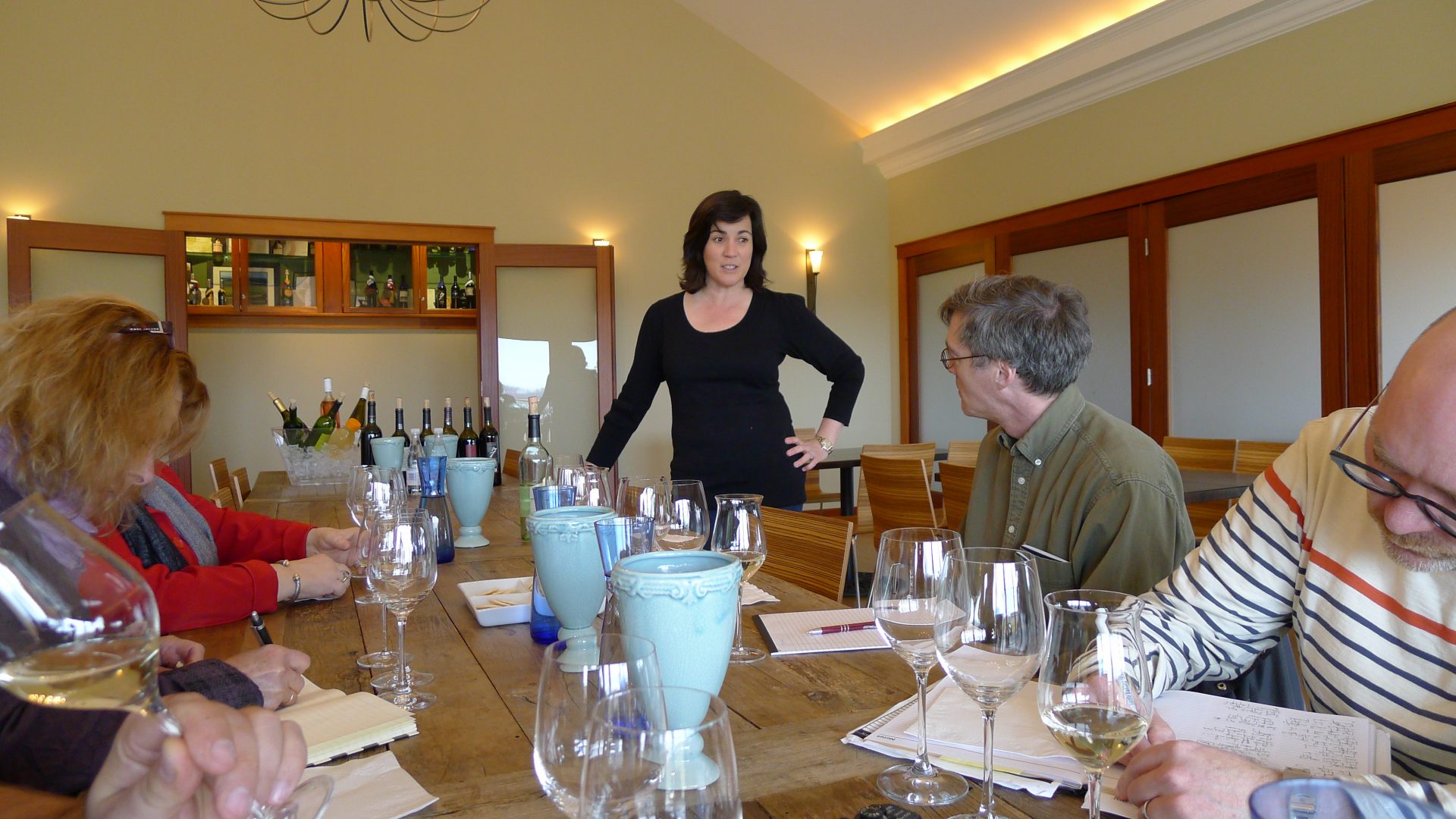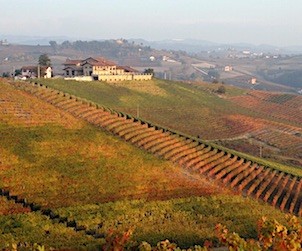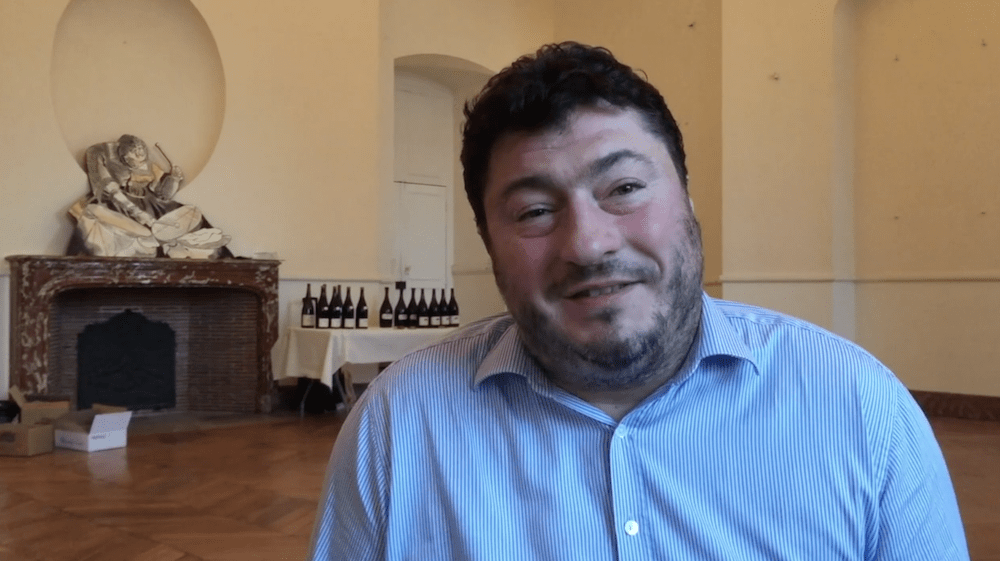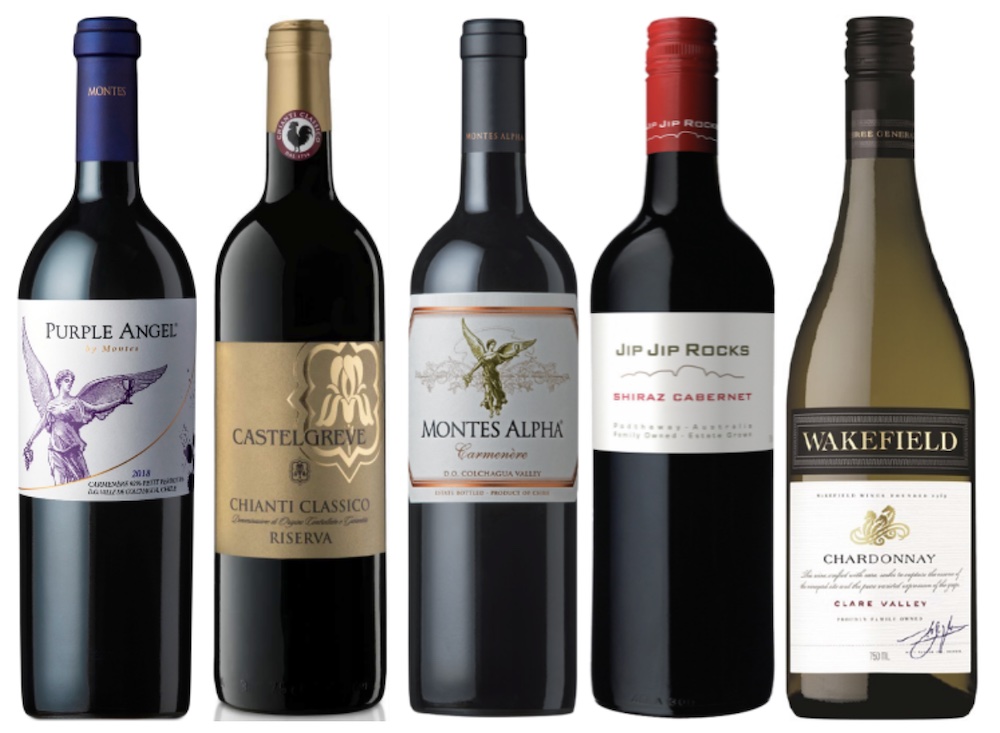By Jamie Drummond
When one thinks of fine North American wine for most it is very rarely that Long Island comes to mind.
California? Without a doubt!
Oregon? For Sure.
Washington State? Of course.
But Long Island?
In the wide world of winemaking Long Island has a relatively short history (if we exclude some of the early viticulture on “Lung Guyland” as far back as the 1600’s) with the first vines of any repute being planted by by Louisa and Alex Hargrave back in 1973. The Hargraves rapidly learned of the numerous pitfalls surrounding the growing of grapes and making of wine in what many view as the most marginal of regions. Their struggles are well (and humorously) documented in Louisa’s book The Vineyard : The Pleasures and Perils of Creating an American Family Winery.
When visiting Long Island and tasting with Winemakers, the one word that you will hear repeated relentlessly is the “M” word… and that word is Maritime.
Long Island undoubtedly has a Maritime climate, what with the Atlantic Ocean to the south and the Long Island Sound to the north, the region extends some 120 miles into rather chilly waters, so that “M” word really is at the heart of each and every wine from this criminally underrated region.
Although, saying that, it is not actually THAT criminally underrated. You see, when one looks at the numbers, one quickly realises that the wines of Long Island are an amazing success story, and perhaps something that those New Yorkers have, up until now, decided to keep to themselves.
Of the 50 or so wineries in the region, many sell over 70% of their production at the cellar door or through their mailing lists. The region does possess an enviable double-whammy of captive audiences though, what with those who holiday in the Hamptons, and then the world’s largest wine retail/wholesale market in NYC.
With this in mind, it is no wonder that so many of Long Island’s wineries actually sell out vintage after vintage, and hence the vast majority of the region’s wines have no distribution out of state.
A brief perusal of New York City’s best winelists reveals that the city’s Sommeliers are certainly wise to the charms of Long Island’s bottlings, and that is always a good sign.
Located in the less-than-salubrious neighbourhood of Brooklyn’s Redhook is a boutique urban winery that champions the fruit of Long Island’s Grapegrowers. Redhook Winery’s production is without a doubt on the micro-winery scale, with annual production being a mere 500 cases at present. However, where they may be lacking in quantity, they undoubtedly excel in quality… and then some!
The man behind this astonishing project is Mark Snyder (Angel’s Share), a Brooklyn native, who saw such potential in Long Island wines that he invited his Napa Winemaker friends Abe Schoener (Scholium Project) and Robert Foley (Robert Foley Vineyards) to tour the region’s vineyards and see for themselves. Both Schoener and Foley were so impressed by Mark’s vision that they now regularly fly in from California to act as Executive Winemakers for Redhook Winery.
As the pristine fruit arrives from the meticulously-sourced Long Island vineyards, it is divided equally between the two Winemakers, but from this point onwards both Schoener and Foley are free to treat the grapes as they see fit, and this is where things get really interesting. Both Winemakers have vastly different philosophies when it comes to crafting the best wine from the Chardonnay, Sauvignon Blanc, Riesling, Merlot, and Cabernet grapes that make their way to Redhook. Barrel and tank tastings showed some truly extraordinary wines that despite the minuscule production runs are certainly worth tracking down, as they show two distinctively disparate takes upon the best that Long Island has to offer… albeit made in deepest, darkest Brooklyn.
Click here for a Good Food Revolution EXCLUSIVE live and direct from Redhook Winery.
Long Island is a mere hour and a half drive from Manhattan, and so it is no wonder that so many New Yorkers make their way out of the city to the pleasures of the Long Island Wineroute on a regular basis. The wine-growing areas begin where the Long Island Expressway ends, and the land is divided by the Great Peconic Bay. Therefore, when one speaks of wine-growing areas in the region one would refer to the North and South Forks, collectively referred to as the “East End”. The greater majority of Long Island’s wineries are located in the North Fork with under a handful of producers calling the South Fork home, notably Channings Daughters and Wölffert Estate, undoubtedly two of Long Island’s best.
The region is planted to almost 25 different grape varietals, but in general it is with Chardonnay and Merlot that Long Island Winemakers have had the most consistent success. Although it has to be said that there are some notable exceptions to this, which will be explored momentarily.
Inherent to the region are seasonal issues of torrential rain, drought, humidity, airborne salt water exposure, the occasional frost, and the odd ferocious storm along the Eastern Seaboard. As you can see, it is by no means an easy place to grow grapes to make great wine, and it is testament to the skill of Long Island’s Viticulturalists and Winemakers that the last five years have seen such a noticeable rise in quality across the board.
Saying all of this, there are many things in Long Island’s favour:
That ever-spoken-of Maritime influence ensures that for the most part hot and cold swings during the days and nights are limited, allowing the grapes to reach perfect physiological maturity without undue stress.
The growing season is quite long with 2,500-3,400 Degree Days, putting Long Island firmly in what is known as Region 3 territory, making Long Island more aligned to France’s warmer Rhône region than Bordeaux when it comes to units of heat summation.
Due to that buffering effect of the surrounding water, temperatures rarely get lower than 5 degrees, meaning that Winters tend to be reasonably moderate.
You’ll hear many comparisons of Long Island’s red wines to those of Bordeaux, but this is for the most part misleading. The East End of the region is actually latitudinally south of Bordeaux, and considerably warmer, but they do share an identical growing season of 210 days.
Other comparisons to California’s Napa Valley can be most disappointing for those drinkers who hold Napa Valley Cabernet as their benchmark when it comes to quality red wines. Even in the very best of vintages, Long Island will have considerably less degree days than the 4,000 annually found in Napa, but that is not to say that Long Island is incapable of making world class reds. Far from it!
In the East End the soils tend towards the glacial and loamy, meaning lots of silt loams over a mixture of sand and gravel (just remember all of those beaches!). There is less of the silt and loam on the North Fork meaning less water retention and hence irrigation is almost always required. It is interesting to note here that much of Long Island’s vineyards were once planted to potatoes, and potatoes, much like the grapevine, thrive on well-drained soils.
Next week in Part 2 of this Long Island piece Drummond looks at his favourite Long Island wines.

 Edinburgh-born/Toronto-based Sommelier, consultant, writer, judge and educator Jamie Drummond is the Director of Programs/Editor of Good Food Revolution… and he had a truly eye-opening trip to Long Island.
Edinburgh-born/Toronto-based Sommelier, consultant, writer, judge and educator Jamie Drummond is the Director of Programs/Editor of Good Food Revolution… and he had a truly eye-opening trip to Long Island.
This video is made possible through the kind support of Fortessa Canada/Schott Zwiesel







